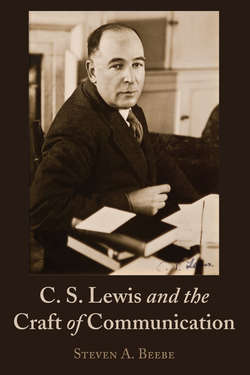Читать книгу C. S. Lewis and the Craft of Communication - Steven Beebe - Страница 33
На сайте Литреса книга снята с продажи.
Oxford and the Dreaming Spires
ОглавлениеLewis traveled to Oxford for the first time on December 5, 1916, to take his exam to be considered for a scholarship. Although not his first choice, University College, one of the oldest Colleges at Oxford, offered him a scholarship on December 13, 1916, and he enrolled in University College in April 1917. But he still had not passed Responsions, the Oxford University entrance exam dubbed the “little go,” because it was an exam that required a prospective student to respond (hence the term responsions) to moderately easy questions from experts. It may have been called the “little go” but it was “no go” for Lewis because he failed the math portion of the exam. Lewis’s talents lay in working with words, not numbers. Nonetheless, University College honored its scholarship offer on the assumption that he would eventually pass the required exam.
In May 1917, just a few weeks after “coming up” to Oxford, Lewis joined the Officers’ Training Corps. (When accepted to Oxford one “came up”; if asked to leave one was “sent down.”) It was because he served in the military that he was ultimately not required to complete and pass Responsions—a good thing because he might never have been admitted to Oxford otherwise.
It was at Oxford that Lewis’s academic talents flourished, and his intellectual refinement at the hand of Kirkpatrick came to fruition. Lewis’s rooms at University College were in the Front Quad, Number 5, accessed through staircase number 12. He had a lovely view overlooking the Radcliffe Quad.65 He was an excellent student.66 And he loved Oxford.
At Oxford, Lewis first studied Classical Honour Moderations—Greek and Latin. Lewis excelled. He then studied what was known as “Greats,” which included ancient history and philosophy, as well as classical rhetoric and poetics (orators and poets). Lewis also read Homer, Demosthenes, Cicero, Virgil, Euripides, Sophocles, and Aeschylus as an Oxford student.67 Throughout his life, Lewis drew upon his early training in logic and his love of romance and story to enhance his communication talents.
←46 | 47→
But it is the classical roots of communication and rhetoric that Lewis would come to know best. During his pre-Oxford education Lewis wrote to his father, “In Greek we have begun Demosthenes. Of course oratory is not a sort of literature that I appreciate or understand in any language, so that I am hardly qualified to express an opinion on our friend with the mouthful of pebbles.”68 Even though Lewis had pronounced Demosthenes as one of the two “great bores” he also noted, “However, compared with Cicero, he strikes me as a man with something to say, intent only upon saying it clearly and shortly.”69 Lewis became well versed in the classical approaches to words and meaning. Lewis scholar Bruce Edwards concludes, “Lewis understood ‘rhetoric’ in its traditional classical and medieval sense—a compendium of verbal tools that assisted and equipped an artist or essayist with strategies to communicate truth more memorably, and, ultimately, to express difficult ideas more accessibly …”70 Edwards adds that through Lewis’s study of rhetoric he was able “… to appeal to the imagination with greater aplomb and delight.”71
As Lewis charted his educational course, especially attracted to the study of ideas, language, and literature, his academic experiences were abruptly interrupted by experiences that, although rarely explicitly discussed, were not far from the surface of his writing and thinking—World War I.
